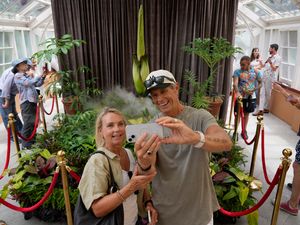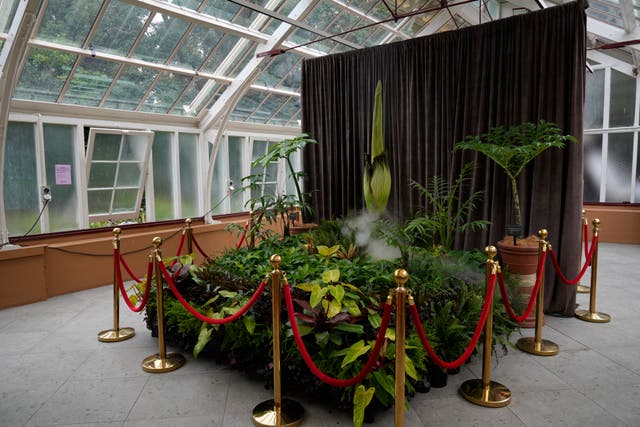Thousands queue to see rare plant which emits stink of death when it blooms
For a week the plant has graced a gothic display in front of a purple curtain and wreathed in mist from a humidifier at Sydney’s Royal Botanic Garden.

The rare unfurling of an endangered plant that emits the smell of decaying flesh has drawn devoted fans to a greenhouse in Sydney where they joined three-hour lines to experience a momentous bloom – and a fragrance evoking gym socks and rotting rubbish.
Tall, pointed and smelly, the corpse flower is scientifically known as amorphophallus titanum – or bunga bangkai in Indonesia, where the plants are found in the Sumatran rainforest.
But to fans of this specimen, she is Putricia – a portmanteau of “putrid” and “Patricia” eagerly adopted by her followers who, naturally, call themselves Putricians.

For a week, she has graced a stately and gothic display in front of a purple curtain and wreathed in mist from a humidifier at the Royal Botanic Garden in Sydney.
Her rise to fame since has been rapid, with up to 20,000 admirers filing past for a moment in her increasingly pungent presence.
No corpse flower has bloomed at the garden for 15 years.
The plant only flowers every seven to 10 years in the wild.
“The fact that they open very rarely, so they flower rarely, is obviously something that puts them at a little bit of a disadvantage in the wild,” said garden spokesperson Sophie Daniel, who designed Putricia’s kooky and funereal display.
“When they open, they have to hope that another flower is open nearby, because they can’t self-pollinate.”





